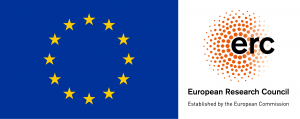Article – Jenny Ponzo, Motherhood and Personhood: The Canonization of Gianna Beretta Molla and the Figurativization of Catholic Norms (International Journal for the Semiotics of Law – 2021)

J. Ponzo, Motherhood and Personhood: The Canonization of Gianna Beretta Molla and the Figurativization of Catholic Norms, in “International Journal for the Semiotics of Law – Revue internationale de Sémiotique juridique 2021, https://doi.org/10.1007/s11196-020-09813-7. (link)
Abstract
This paper considers the cause for canonization of Gianna Beretta Molla, a pediatrician who died in 1962 because during her pregnancy she refused medical treatment that would have caused her to abort. The acts of Gianna’s cause contribute to the creation of a specific example mirroring and sustaining the position adopted by the Church in the 1960s and 1970s in matters of abortion, motherhood, family, and right to life. These issues were particularly delicate in those years, when the Catholic Church was facing the rise of liberal and radical positions that contrasted with its doctrine; in particular, lawn. 194 of 22 May 1978 constituted the first act of abortion legalization in Italy. In this context, the sanctification of Gianna had strategic importance for the Church as a way of presenting the faithful with the Catholic ideal of motherhood through a concrete example to follow. In this paper, I argue that the way in which the figure of Gianna is represented in the acts of her cause for canonization can be read as the figurativization of the axiology laid out in more abstract terms in Church texts with a normative value, such as the constitutions it issued during the Second Vatican Council and other official documents expressing the pontifical magisterium.

